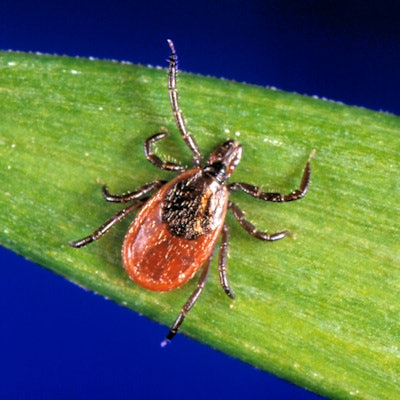
There have been some interesting developments in the IVD market, specifically in the area of tick-borne diseases. Tick-borne diseases beyond Lyme are getting attention due to a lack of reliable diagnostic tests, but that's starting to change for at least one disease, babesiosis.
 Bruce Carlson of Kalorama Information.
Bruce Carlson of Kalorama Information.Ticks are arachnids: Small crawling bugs with eight legs that are related to spiders and mites. They are also parasites and feed on the blood of humans and animals. Ticks are vectors due to their disease transmission capability.
One of these diseases is babesiosis, a rare and sometimes severe condition caused by a tick infected with Babesia microti, a microscopic parasite that infects red blood cells. In the U.S., the parasite was thought to be present only in the Northeast and Midwest; however, babesiosis cases recently have been reported on the West Coast as well as in Switzerland. According to the U.S. Centers for Disease Control and Prevention (CDC), in 2014, babesiosis was found in 31 states in the U.S. and in 1,744 patients.
Clinically, babesiosis can present with fever, fatigue, malaise, headache, chills, muscle pain, nausea, vomiting, reduced appetite, and depression, depending on the immune status of the patient. Symptoms can last from weeks to months. However, babesiosis can be life-threatening for the elderly, those with serious health conditions or a weak immune system, or individuals who do not have a spleen.
If babesiosis is suspected, a microscopic examination of blood smears -- Giemsa or Wright stains -- should be carried out. Babesial DNA can also be detected by polymerase chain reaction (PCR) in cases where diagnosis is suspected but smears are negative. Immunofluorescence of immunoglobulin M (IgM) and immunoglobulin G (IgG) antibodies is also used to confirm a diagnosis. However, this test is not reliable for active infection because antibodies remain high for months or even years after clinical resolution.
In March 2018, the U.S. Food and Drug Administration (FDA) approved Oxford Immunotec's Imugen Babesia microti arrayed fluorescent immunoassay (AFIA) and nucleic acid test (NAT) to screen for infection in plasma and whole blood samples. The tests are not indicated for diagnostic use, however; their intended use is for blood donor screening from individual human donors, and both tests are only performed in-house at the company's Norwood, MA, facility.
In January 2019, the FDA also approved the use of Grifols' Procleix Babesia assay for screening individual human donors, including volunteer donors of whole blood and blood components, as well as living donors of organ and tissue. It can also be used for screening cadaveric donors. Procleix is a qualitative in vitro nucleic acid amplification test to detect RNA from four Babesia species -- B. microti, B. duncani, B. divergens, and B. venatorum -- in whole blood specimens.
Finally, IGeneX has a Babesia panel blood test that can be ordered from the company's website. It offers an immunofluorescence assay, fluorescence in situ hybridization (FISH) assay, and PCR screen.
Bruce Carlson is the publisher of Kalorama Information, part of Science and Medicine Group.
Disclosure: LabPulse.com is a sister company of Kalorama Information.



















